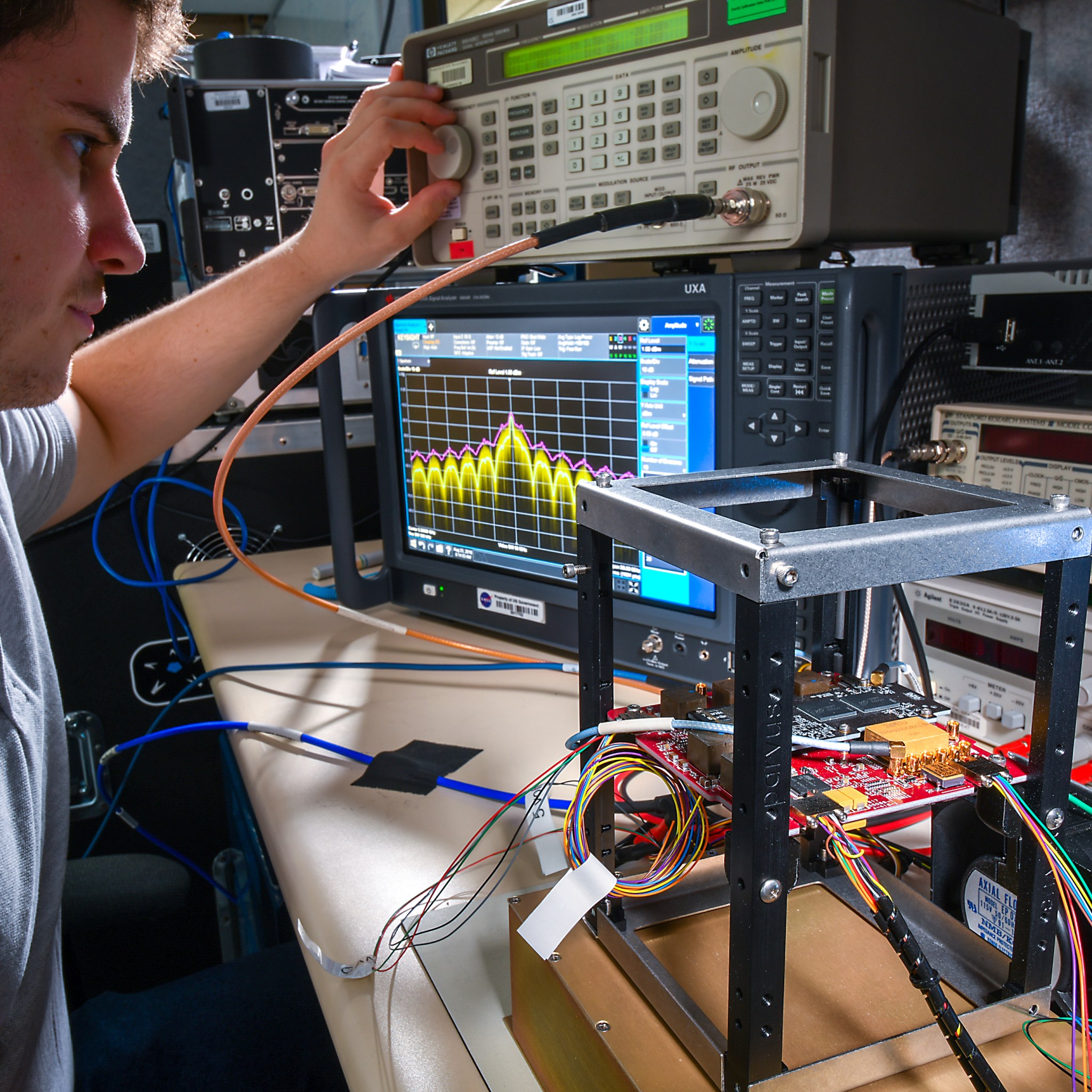Automated Technology Developed at Glenn Launches to Space

2 min readPreparations for Next Moonwalk Simulations Underway (and Underwater)
Engineer Adam Gannon works on the development of Cognitive Engine-1 in the Cognitive Communications Lab at NASA’s Glenn Research Center.Credit: NASA
Automated technology developed in Cleveland has launched to space aboard the Technology Education Satellite 11 mission. The flight test aims to confirm the precision and accuracy of this new technology developed at NASA’s Glenn Research Center.
The Cognitive Communications Project was founded by NASA in 2016 to develop autonomous space communications systems for the agency. Autonomous systems use technology that can react to its environment to implement updates during a mission, without needing any human interaction.
The project first collaborated with the Technology Education Satellite (TES) program at NASA’s Ames Research Center in California’s Silicon Valley back in 2022 to launch the TES-13 CubeSat, which sent the first neuromorphic processor to space. A neuromorphic processor is a piece of technology built to act in ways that replicate how the human brain functions. Through TES-13, the cognitive team was able to test their advanced technology in space successfully for the first time.
Researchers at NASA’s Ames Research Center in California’s Silicon Valley assemble the Technology Education Satellite-11 CubeSat inside of a laboratory.Credit: NASA
After the success of TES-13, the team compiled each of their unique capabilities into one end-to-end system, called Cognitive Engine 1, or CE-1. CE-1 is a space and ground software system that automates normal aspects of spacecraft communications, like service scheduling and planning reliable priority-based data transfers.
Cognitive technology launched to space for the second time on July 3 on TES-11 aboard Firefly Aerospace’s Noise of Summer mission. TES-11 was one of eight small satellites launched during the mission. It was created as a part of the Technology Education Satellite program at NASA Ames, which organizes collaborative projects and missions that pair college and university students with NASA researchers to evaluate how new technologies work on small satellites, known as CubeSats.
Image of various CubeSats deployed in space from the International Space Station. Credit: NASA
TES-11 is testing the components of CE-1 that allow satellites to independently schedule time with ground stations and download data without human interaction. Results from the TES-11 mission will be used by the Cognitive Communications team to finalize their CE-1 design, to ensure that the technology is ready to be adopted by future NASA missions.
The Cognitive Communications Project is funded by the Space Communications and Navigation program at NASA Headquarters in Washington and managed out of NASA’s Glenn Research Center in Cleveland.
Return to Newsletter
Explore More
3 min read
NASA’s X-59 Progresses Through Tests on the Path to Flight
Article
7 hours ago
1 min read
Cleveland High School Students Land STEM Career Exploration Experience
Article
8 hours ago
1 min read
NASA Lands at National Cherry Festival
Article
8 hours ago
Welcome to Billionaire Club Co LLC, your gateway to a brand-new social media experience! Sign up today and dive into over 10,000 fresh daily articles and videos curated just for your enjoyment. Enjoy the ad free experience, unlimited content interactions, and get that coveted blue check verification—all for just $1 a month!
Account Frozen
Your account is frozen. You can still view content but cannot interact with it.
Please go to your settings to update your account status.
Open Profile Settings